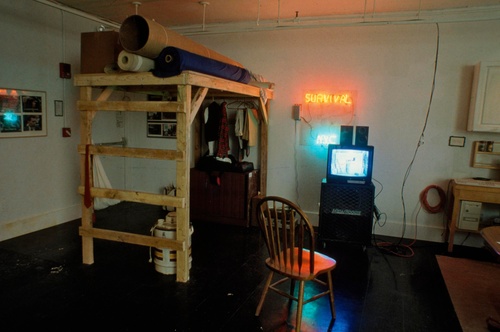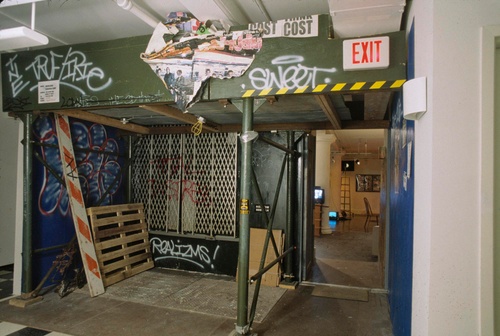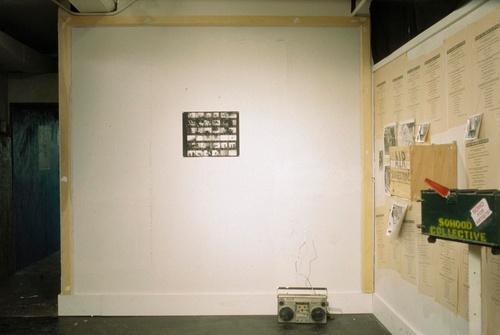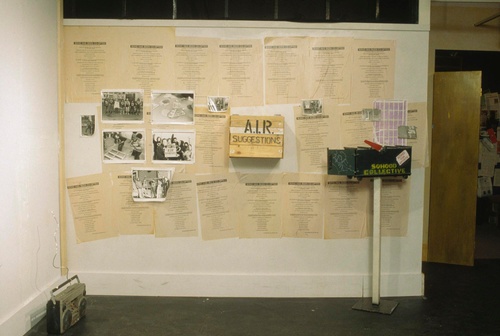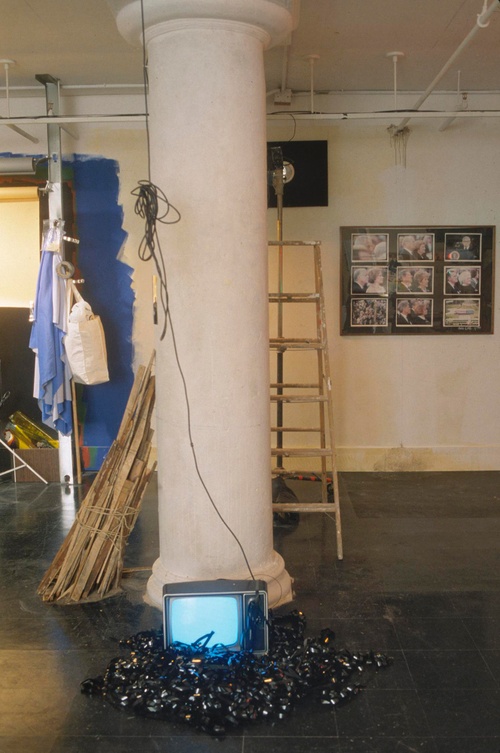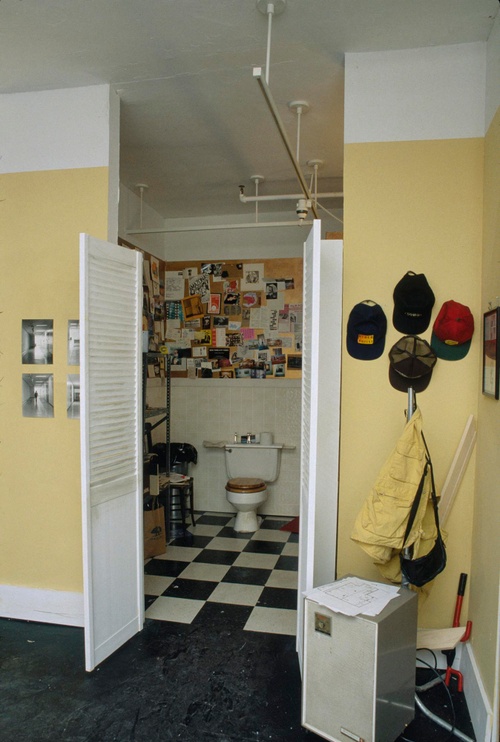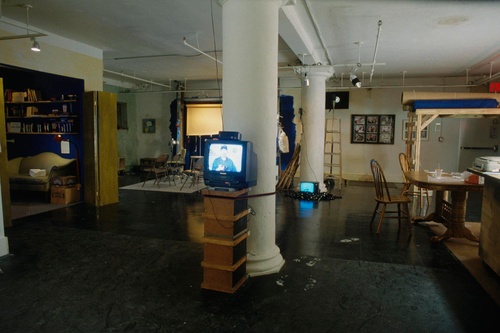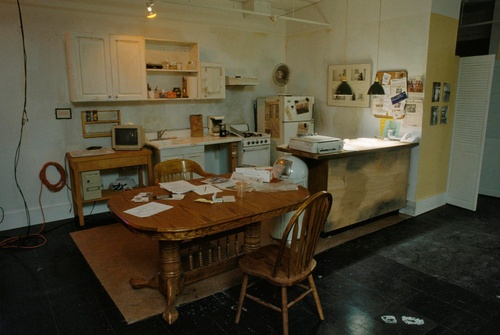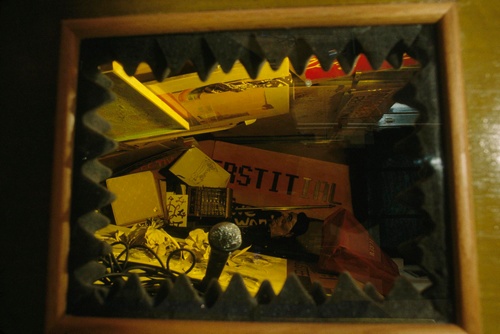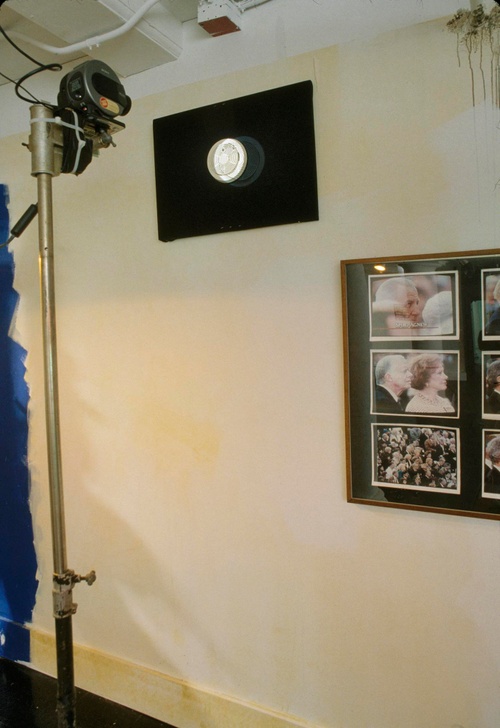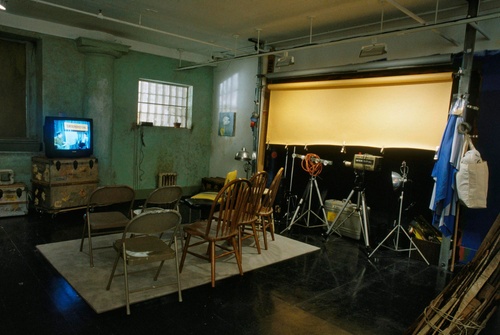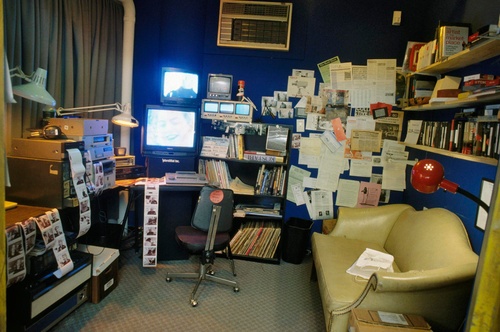Open House: Michael Smith and Joshua White
Open House: Michael Smith and Joshua White
Michael Smith and Joshua White’s Open House is an elaborate illusion wrapped around a prosaic story based on what some would call the quintessential New York reality: real estate. The artists’ second collaborative undertaking, Open House is in many ways a sequel to their 1997 work entitled Musco: 1969-1997, which told the story of a music-lighting company driven out of business by changing musical trends. Open House is a highly crafted environment that generates the illusion of a business or personal upheaval coming about as the result of forces beyond any one individual’s control. On the surface, Open House is a straightforward narrative: artist “Mike” is getting rid of the loft where he has lived and worked for the past two decades, as a sculptor, a video artist, and a freelance entrepreneur, and is showing the loft to prospective buyers. Since he cannot do this in person, a videotape greets visitors at the entrance of his soon-to-be-former home. As we enter and look around the loft, we encounter various aspects of “Mike’s” existence: his art, his side ventures (including a 1980s public access cable show about the art world), and his personal life. With its multiple video presentations of “Mike” in his somewhat contradictory roles as artist, salesman, video producer, and loft dweller, Open House is a complex trompe-l'oeil investigation into a world where artistic ideals and business reality can never be fully reconciled. “Mike” has been Michael Smith’s artistic alter-ego since the late 1970s, serving as the basis for a number of performances, videos, and installations. The evolution of “Mike” during the period has reflected dramatically changing times. During the 1980s, “Mike” was a happy-go-lucky everyman, who liked to party, go to discos, show off, and revel in arcane consumer products. By the late 1990s and the time of Musco and Open House, “Mike” has acquired a more world-weary cast, as changing mores and a midlife crisis have taken their toll. Underlying the various modalities of “Mike” is Smith’s ongoing interest in exploring character as a function of cultural transformation. While “Mike’s” ways of expressing himself are always deadpan, a strong undercurrent of satire and parody connect his self-contained world with the turmoil and uncertainty of the surrounding culture. The artists’ loft movement of the 1970s provides a social and historical backdrop to Open House. Pioneering the adaptation of industrial lofts into living/working spaces, the loft movement was centered in Soho’s more than two dozen blocks of large, underutilized spaces. As a landmark in the evolution of housing in New York City, the loft movement reflected the flexible economy as well as the cultural politics of its time. Artists were able to live as urban pioneers, create work, and support themselves while keeping their distance from the “real” world of business and finance. In the long run, the loft movement fell victim to its own success. By transforming an industrial limbo into a highly desirable neighborhood, in the process sparking the growth of New York’s most active gallery scene, the loft movement laid the way for the congested, over-commercialized tourist mecca that Soho has become. As a result, over time, the infrastructure of galleries, artists, and art services has been dismantled, and artists have once again taken the lead, this time fleeing the spiraling rent costs and crowded sidewalks of the neighborhood they created. “Mike” is a case study of the artist-pioneer; having transformed his loft from an uninhabitable shell into a cozy living/working space, he now hopes to cash in on it in order to move elsewhere. Throughout Open House, we are presented with visceral testimony both to “Mike’s” previous existence and to his highly contrasting life today. An example of the former is Sweat Equity, an installation sculpture in the form of a wall, built by “Mike” from construction materials acquired during his 1970s day job. Perhaps the most revealing detail of the entire installation is the fact that “Mike” is no longer using the loft as his primary residence, and the paraphernalia of his side businesses (including erstwhile real-estate broker) have literally taken over the space. One of these enterprises is a small video post-production facility currently involved in finishing an industrial short titled “The Downtown Look,” designed to attract business from the fashion and cosmetic companies that have become the dominant commercial force in SoHo. Open House is as much a portrait of a neighborhood as it is a slice-of-life look at the endangered species that once thrived in this habitat. While it evokes a very particular time, place, and life story, Open House can be interpreted as a commentary on the changing character of New York in the 1990s and, by extension, on the United States in the global economy. Like Musco before it, Open House effectively depicts a profound clash of values, between an old American dream that prized vision, innovation, and craftsmanship and a new one of a streamlined consumer’s paradise, where a seemingly endless but entirely preprogrammed variety of sensations is offered from behind high-tech facades. Again like Musco, Open House charts the course of an independent business venture, but this time the enterprise embodies one person’s dream of making the world a better place. As spectators, we arrive on the scene at the moment when the dream has failed and the small-time operator must cut his losses and move on. For Michael Smith, the extension of the “Mike” persona into the world of urban gentrification continues a twenty-year exploration by the artist of the impact of postmodernist developments on everyday life. Joshua White is best known as the inventor of the legendary Joshua Light Show at Bill Graham’s Fillmore East in the late 1960s. Open House is a result of his long-term interest in theater and television and part of an ongoing documentation of the legacy of the 1960s counterculture. Together, Smith and White have forged a unique artistic partnership whose very existence indicates that the problems they explore are not as bad as they may seem. By merging psychobiography and artistic and social concerns of the past twenty-five years, Open House succeeds by creating an open system. It demonstrates that even when old values no longer sustain a vision, human beings still have the capacity and resources to join forces and continue working together–possibly even to nurture a new vision.
